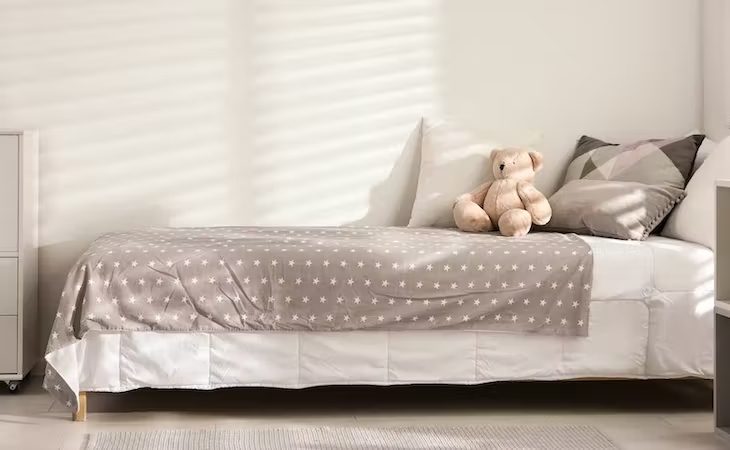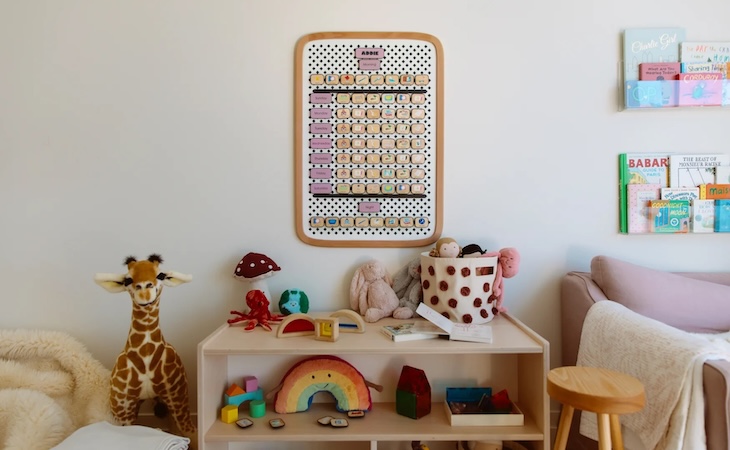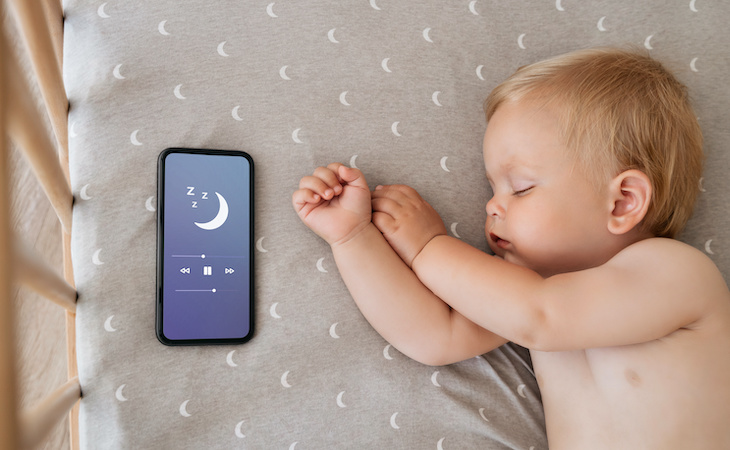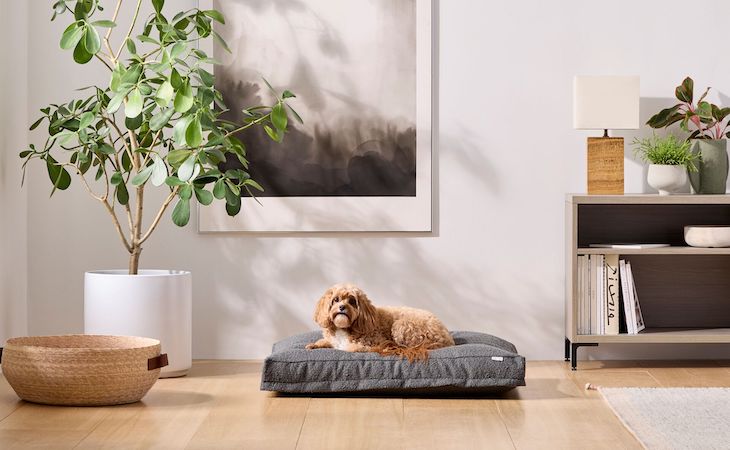That teddy bear lounging on your little one’s bed may look sweet and innocent, but chances are it’s teeming with dust mites, microscopic organisms that feed on shed skin (ew) and trigger allergies like nobody’s business (boo).
If your child has allergies, that could mean sneezing and a runny nose; itchy eyes, nose, throat, or skin; coughing; and more—none of which are conducive to sleep.
Children, allergies, and sleep
Sleep is vital for kids’ health—it’s when they process the events of the day and consolidate memories, recharge their immune system…kids even do most of their growing at night! But poor quality shut-eye can bode especially poorly for children with allergies, says Gailen D. Marshall, MD, PhD, director of the University of Mississippi Medical Center’s Division of Allergy, Asthma and Clinical Immunology.
“Too little sleep stresses their already overactive immune system, and stress is a well-known factor in increasing infections and worsening control of allergies and asthma in children,” Marshall says.
How to allergy-proof your child’s bedroom
We’re not telling you that you need to send Brownie the Bear packing. But if your kiddo has allergies, there are steps you can take to make his or her bedroom more comfortable. Keep reading for expert-approved tips on allergy-proofing your child’s bedroom.
Bedding
Frequent washing is a must for removing allergens from sheets, pillowcases, blankies, and larger blankets. Use hot water (higher than 130ºF or 54.4ºC); cold water won’t kill dust mites, according to the Children’s Hospital of Wisconsin. Clothesline users should be aware that pollen can easily stick to clothes as they dry in the sun, making the indoor dryer a more allergy-friendly option.
When it comes to choosing a comforter, look for synthetic materials like alternative down or polyester. Feathers and down are common allergens.
The National Sleep Foundation says weekly washing is ideal. But if that’s logistically difficult, they recommend at least washing your child’s pillowcases once a week, as they harbor more opportunities for allergens to infiltrate the nose, eyes, mouth than the sheets themselves, which mainly touch the body.
Mattress
You’ll want to cover the mattresses and box spring with zippered, dust-, and mite-proof covers. Hillary Gordon, MD, pediatric allergist at Nemours duPont Hospital for Children in Wilmington, Del., says products made of woven microfiber are preferable, as they’re comfier and can tolerate frequent washings, which help to further prevent allergen buildup. If your child’s allergies are severe, try wiping the covers themselves with a damp cloth in between washings, recommends the Centers for Disease Control and Prevention.
The mattress itself should be made with hypoallergenic materials. Our
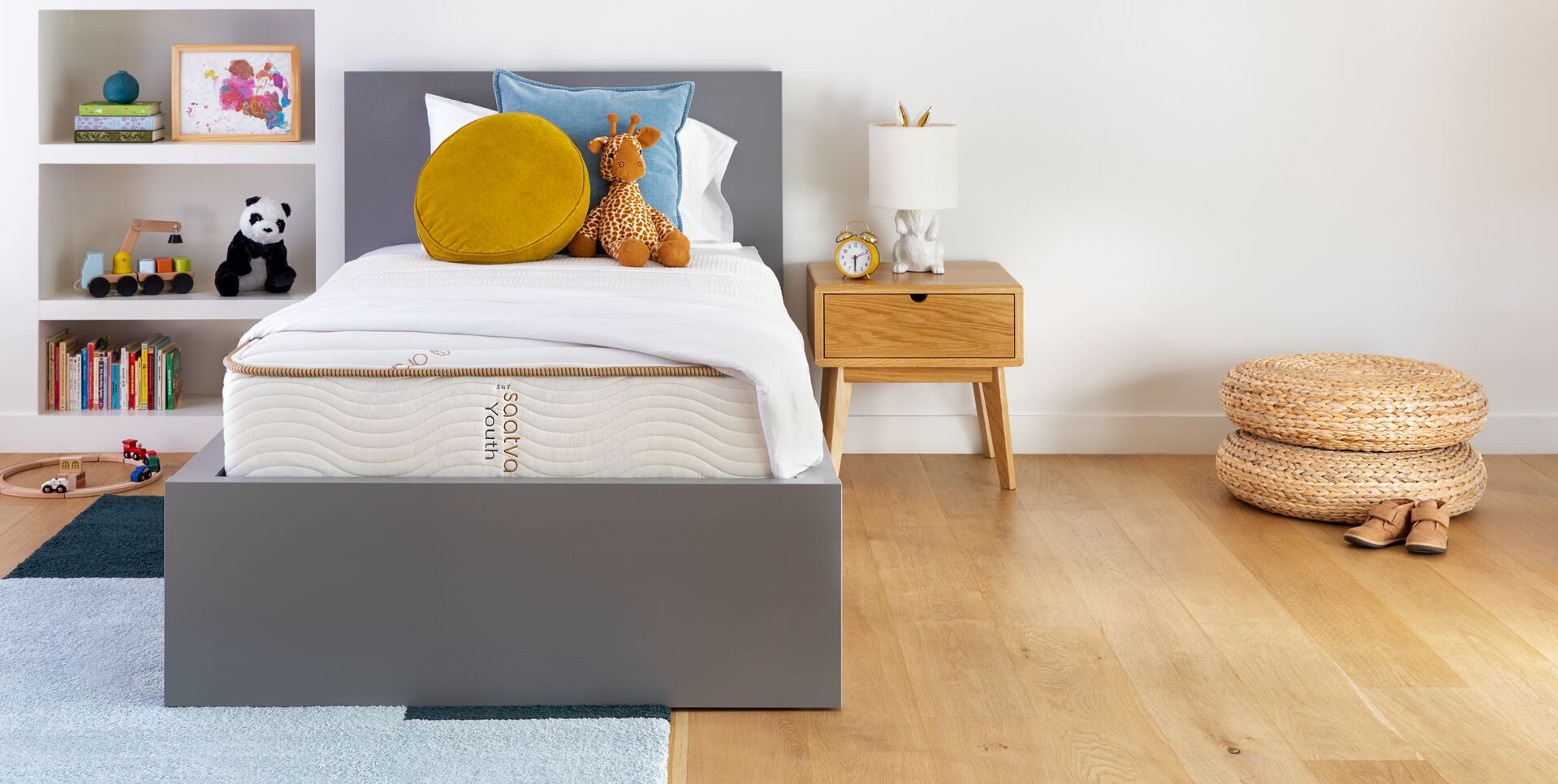
Our dual-sided nontoxic crib mattress for little ones
, for example, is covered in organic cotton that has been treated with a botanical antimicrobial that resists dust mites and other allergens.
Stuffed animals
Now, about Brownie the Bear. He can stay, but he needs to take a regular spin in a hot dryer for 20 minutes to remove dust mites. As for his friends, a few of them can stay, but an entire menagerie can spell trouble for your allergic child. The doctors at Children’s Hospital of Wisconsin recommend limiting the total number of stuffed animals to two or three.
Alternatively, try this cool hack: Seal stuffed animals in a plastic bag and place them in the freezer for two days. Dust mites can’t survive freezing temps for that long, according to research out of Wright State University in Dayton, Ohio.
Pillows
Pillows can become a breeding ground for dust mites if you’re not careful. Memory foam and latex pillows are naturally hypoallergenic, while Dacron is a good synthetic option. Encase pillows in zippered, dust-, and mite-proof covers.
The floor
Just like tiny, painful Lego pieces, allergens love living in carpeting, especially long, loose pile carpet. Not only do those fibers protect them from being sucked up during vacuuming, but they collect all sorts of food for them (like dead skin cells and pet dander). If your child’s room is carpeted and removing it is possible, that’s ideal. Area rugs? Check to make sure they’re washable before purchasing and toss them in the washing machine on a hot cycle once a week, recommends KidsHealth.org. Your best bet is wood, vinyl, or tile, mopped at least weekly.
If you have wall-to-wall carpet that can’t be removed, vacuuming the bedroom at least once a week is imperative. Use a small-pore, multi-layered filter bag on your vacuum, or buy a vacuum with a HEPA filter, Gordon suggests.
If your child has asthma as well as allergies, try to reserve vacuuming for when she or he is away for at least a few hours to allow any dust or allergens that get kicked up by the vacuum to settle.
Ceiling
Have you ever looked at the top of your ceiling fan? Chances are it’s coated with a thick layer of dust. When you turn that fan on, all that dust will go spewing around the room. Avoid using ceiling fans, or if you do use them, keep them as clean as possible.
Related: What to look for in a mattress if you have allergies
Keeping things clean
When you dust, use a damp cloth to avoid spreading allergens in the air. (Parents familiar with treasured story character Amelia Bedelia know that when she is asked to “dust the furniture,” the loopy housekeeper proceeds to literally apply dusting powder to the furniture. Don’t do that.) Concentrate on books, picture frames, knickknacks, and anything else residing on shelves.
During pollen season (springtime for tree pollen; summer for grass pollen; summer through fall for weed pollen), keep your child’s bedroom windows closed as much as possible, particularly on windy days. Don’t smoke around your kids or let smokers in your house, as tobacco smoke can trigger coughing, wheezing, and even asthma attacks.
But even secondhand and thirdhand smoke are problematic (thirdhand smoke is the residue that sticks to your clothing, hair, and body after you smoke, even if you do so outside). If you smoke, do whatever you can to quit. Not only will you help your child’s allergies, but you’ll improve your chances of being around for more snuggling in the future.
Child complaining of pain in the middle of the night? Here’s everything you need to know about growing pains and how to deal with them.

